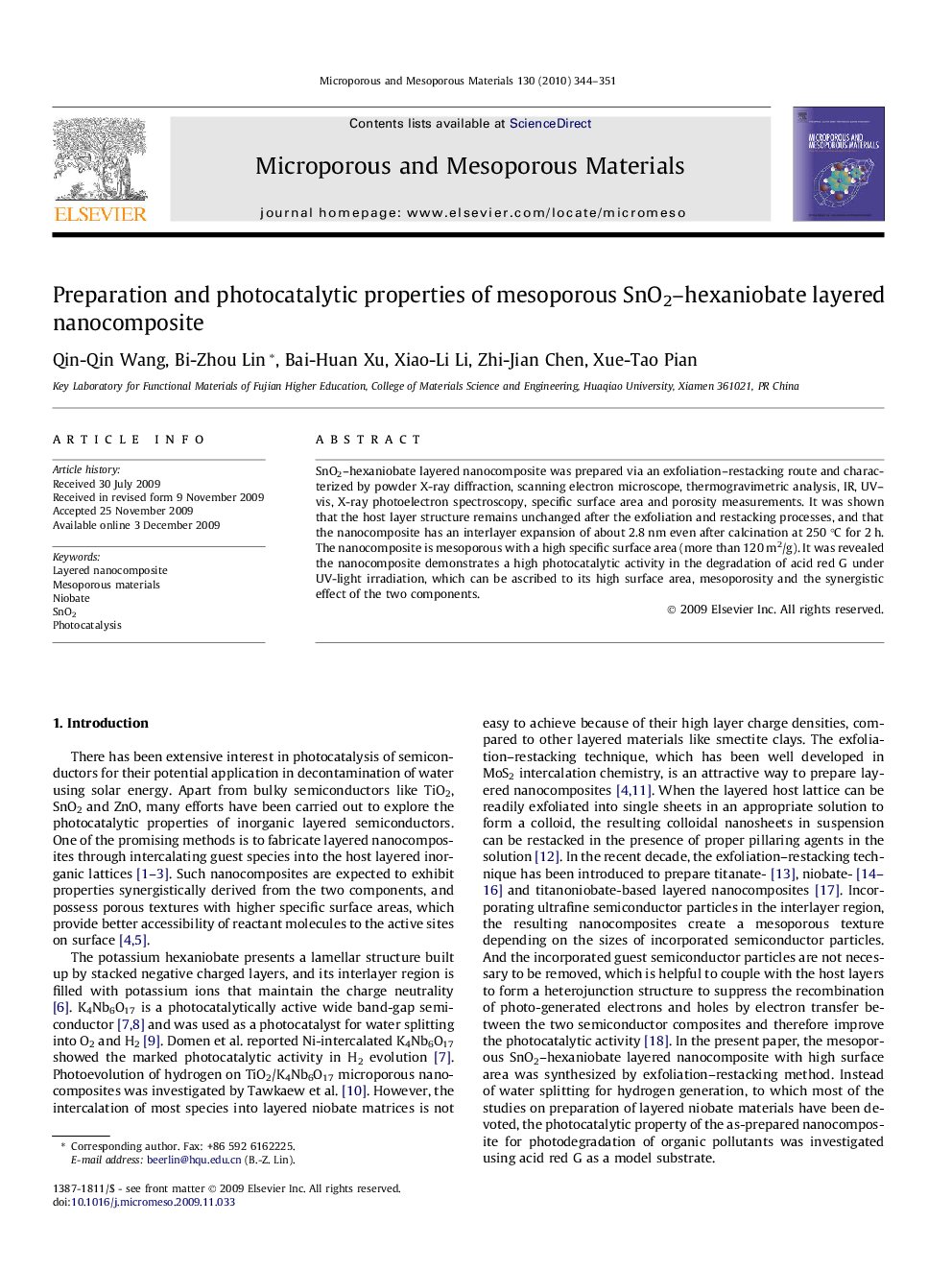| Article ID | Journal | Published Year | Pages | File Type |
|---|---|---|---|---|
| 75497 | Microporous and Mesoporous Materials | 2010 | 8 Pages |
SnO2–hexaniobate layered nanocomposite was prepared via an exfoliation–restacking route and characterized by powder X-ray diffraction, scanning electron microscope, thermogravimetric analysis, IR, UV–vis, X-ray photoelectron spectroscopy, specific surface area and porosity measurements. It was shown that the host layer structure remains unchanged after the exfoliation and restacking processes, and that the nanocomposite has an interlayer expansion of about 2.8 nm even after calcination at 250 °C for 2 h. The nanocomposite is mesoporous with a high specific surface area (more than 120 m2/g). It was revealed the nanocomposite demonstrates a high photocatalytic activity in the degradation of acid red G under UV-light irradiation, which can be ascribed to its high surface area, mesoporosity and the synergistic effect of the two components.
